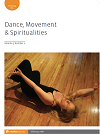
Full text loading...

Presenting convergences between mindfulness and somatic practices, this article makes a case for somatic practices as embodied mindfulness. It discusses historical origins as well as brief comments supporting some shared value systems and qualities espoused in both practices. After giving an overview of embodied cognition theory and the Interacting Cognitive Subsystems model, I trace how developing expertise in both somatic and mindfulness practices create the same cognitive repatterning to support the argument that somatics is a field of embodied mindfulness practices.

Article metrics loading...

Full text loading...
References


Publication Date:
https://doi.org/10.1386/dmas_00032_1 Published content will be available immediately after check-out or when it is released in case of a pre-order. Please make sure to be logged in to see all available purchase options.